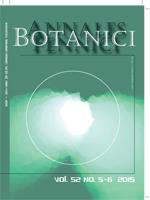Salix lapponum is one of the rarest and most endangered glacial relics in western and central Europe. Our research was performed in the Knyszyńska Forest, one of the few locations of S. lapponum that have survived in northeast Poland. The main objective was to evaluate how the population structure of S. lapponum changes due to the expansion of competing species of trees and shrubs, and how the removal of a competitor, Betula pubescens, affects the population of S. lapponum. We found that S. lapponum cannot withstand competition from other woody species. When sunlight is limited, its shoots become elongated and fewer in number. This plant can compensate for the effect of light deficiency of approximately 50%. Further increase of shadiness caused decline in the plant height and number of shoots. Elimination of neighboring trees caused changes in S. lapponum shoot morphology and the average height of the shoots was significantly lower than before the habitat management. Clearing increased the ability of S. lapponum to undergo vegetative reproduction. Removing birch trees is crucial for the protection of S. lapponum but it should be applied gradually during two or three successive seasons and accompanied by physical control of competing fast-growing Salix spp.
How to translate text using browser tools
7 August 2015
Protection of Relic Plant Species at the Limit of Their Geographical Range: Response of Salix lapponum to Competitor Removal
Aleksander Kołos,
Dan Wołkowycki,
Piotr Banaszuk & ,
Andrzej Kamocki
ACCESS THE FULL ARTICLE

Annales Botanici Fennici
Vol. 52 • No. 5–6
December 2015
Vol. 52 • No. 5–6
December 2015




